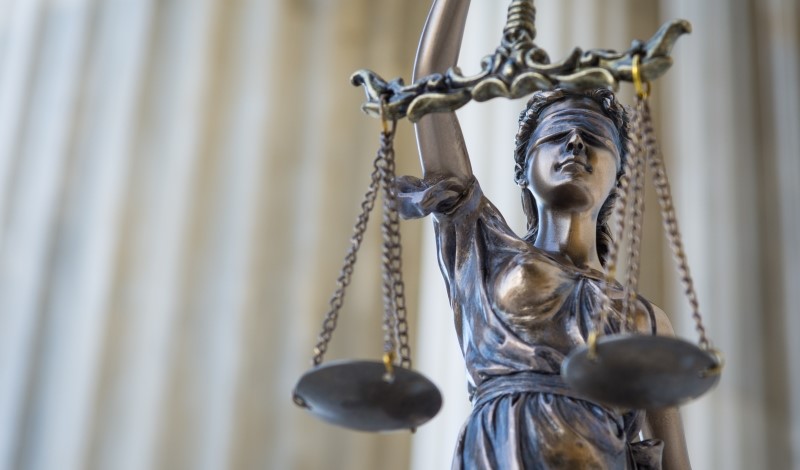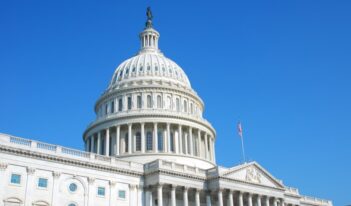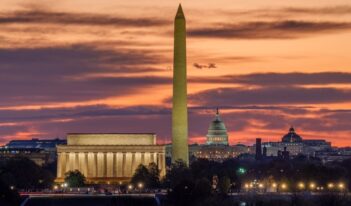
A Supreme Court decision seemingly limited to securities fraud could imperil regulatory adjudication broadly.
No recent U.S. Supreme Court term has included as many consequential regulatory decisions as the one just concluded. Of these decisions, SEC v. Jarkesy may turn out to be the most consequential—maybe even more so than the Court’s headline-grabbing decision overturning the Chevron doctrine. Undoubtedly, Jarkesy will render unconstitutional some agencies’ statutory authority to remedy regulatory violations by imposing civil penalties in administrative proceedings. Less obviously, but maybe more importantly, Jarkesy may render unconstitutional some agencies’ authority to remedy regulatory violations at all.
Jarkesy addressed whether the U.S. Constitution’s Seventh Amendment allows the Securities and Exchange Commission (SEC) to adjudicate administratively—or “in house” as SEC critics like to say—its claim for civil penalties against a person accused of securities fraud who insists on a jury trial in federal court. The Amendment provides: “In suits at common law, where the value in controversy shall exceed twenty dollars, the right of trial by jury shall be preserved.”
Is an SEC proceeding to recover civil penalties a “suit at common law”? If so, the accused may insist on a federal court jury trial, thereby preventing the SEC from adjudicating in house.
Much as expected, the Court answered “yes.” It explained that the phrase “suit at common law” is not limited to “‘common law forms of action recognized’” when the Seventh Amendment was ratified in 1791. It encompasses any claim that is “legal in nature,” including any statutory claim, whenever established. What it excludes, most importantly, is any equitable claim.
An SEC civil penalties claim, the Court concluded, is legal rather than equitable. What makes it so is mainly the remedy sought. Remedies designed to punish and deter, such as civil penalties, could only be “enforced” at the time of Seventh Amendment’s ratification in courts of law, as distinguished from courts of equity. Our federal system, by the way, no longer distinguishes between courts of equity and law.
The nature of the cause of action, the Court added, “confirms” its characterization of the SEC’s claim as legal. A securities fraud claim and a common law fraud claim, although not “identical,” are close enough for Seventh Amendment purposes. Both “target” conduct “misrepresenting and concealing” material facts.
But characterizing the SEC’s claim as legal did not alone resolve the case. The Court still had to decide a related but much more contested question: whether the claim falls within what has come to be known as the “public-rights exception.” That exception allows the U.S. Congress to assign a claim to an agency for adjudication—without a jury—as long as the agency’s resulting decision is reviewable in federal court. If the exception applies, the Seventh Amendment does not.
“Public right” is a slippery term. A workable definition has always eluded the Court. As the Court had to concede in Jarkesy, “confusing precedents” abound. The Court, unfortunately, made no attempt to unconfuse them.
To be sure, certain claims fall uncontroversially into the public rights category. They include, most obviously, claims against the government for public benefits and franchises such as patents.
More controversially, New Deal-era decisions and beyond have recognized a broader, if indeterminate, category of public rights. These decisions have included within the public rights category any case “in which the claim … derives from a federal regulatory scheme” established by statute or the claim is otherwise “integrally related” to such a scheme. The expansive conception of public rights reflected in this and similar formulations has left Congress seemingly free to assign any statutorily created regulatory claim—even, in at least one case, a claim between private parties—to an agency rather than a court for adjudication.
Congress was free, that is, until Jarkesy. The Court held that an SEC fraud claim to recover civil penalties does not fall within the public rights category. Yet the Court declined to “‘definitively explain’” the distinction it had drawn between public and private rights in reaching this conclusion. Actually, the Court did not explain the distinction at all. Instead, it merely announced that public rights include only those the Court has traditionally or historically recognized as such—which is to say those it had recognized in a handful of cases, selected in Jarkesy without reliance on any legal principle, dealing with such matters as government benefits, patents, immigration, foreign commerce, and public lands. This selective invocation of precedent opened up the Court to the dissenting Justices’ charge that it had “gerrymandered” the public rights doctrine.
The Court largely ignored its modern decisions defining public rights broadly, including one that Chief Justice John G. Roberts, the author of Jarkesy, had himself written. But there was one decision the Court could not ignore: its 1977 decision in Atlas Roofing v. Occupational Safety and Health Commission. The government and the dissenters in Jarkesy relied on Atlas Roofing for the proposition that, whatever the exact contours of the public rights exception, it has always included claims by the government to enforce “new” regulatory obligations established by statute.
Atlas Roofing rejected a Seventh Amendment challenge to a statute authorizing an agency to impose civil penalties administratively against an employer for violating the Occupational Safety and Health (OSH) Act. In Jarkesy, the Court first distinguished Atlas Roofing summarily: Unlike the securities laws, the OSH Act did not bear any resemblance to—“did not borrow” from—a traditional common law action. The OSH Act authorized the agency to draft a new regulatory “building code” with no common law antecedents. Then, more ominously, the Court suggested that Atlas Roofing may have been overruled by a 1989 bankruptcy decision or, as Justice Neil Gorsuch argued in a concurring opinion joined by Justice Clarence Thomas, was just wrongly decided.
So where does Jarkesy leave agencies? As far as civil penalties are concerned, the SEC itself will be largely unaffected. It may seek them in federal court, as it has done in recent years and as it did before 2010, when Congress first gave it in-house adjudicatory authority in most civil penalties cases.
But other statutes authorize agencies to recover civil penalties only through administrative adjudications. If those adjudications fall within the Seventh Amendment, the agencies will lack any enforcement power—unless, of course, Congress amends their statutes to authorize suit in federal court.
Yet Jarkesy’s cut into the regulatory state may run much deeper than rendering agencies without authority to impose civil penalties in administrative proceedings. Civil penalties are not the only remedies available to regulatory agencies. Nor, in most regulatory programs, are they the most important ones. Just as courts issue injunctions, agencies regularly order people to do or not to do things—such as to abate an occupational hazard, rehire a wrongly fired employee, recognize a union as a collective bargaining representative, supply health-and-safety or financial records, disgorge specific assets wrongfully acquired, and so forth. Agencies also, among their other coercive remedial activities, rescind licenses and permits on which people’s livelihoods often depend.
Any constitutional objection to adjudications in which agencies seek these and similar remedies will not rest on the Seventh Amendment because these remedies—and thus the claims with which they are associated—will usually be classified as equitable, not legal.
Rather, the objection to these adjudications will rest on Article III of the Constitution, which vests the “judicial Power of the United States” in the federal courts, and them alone. But the distinction makes little difference. The question in an Article III challenge to agency adjudication will be the same as the question usually dispositive in a Seventh Amendment challenge after Jarkesy: Does the agency’s claim fall within the public rights exception? Only if a claim falls under the exception will the Court’s Article III doctrine allow Congress to assign it to an agency for adjudication. In fact, Jarkesy could just as well have been brought as an Article III challenge—and, under the Court’s case law, it probably should have been—rather than a Seventh Amendment challenge. The result would have been the same.
In the end, Jarkesy does not answer my title question: What is left of agency adjudication after the Court’s decision? That deficiency is essentially the chief complaint that runs throughout the three-justice dissent. The answer will depend on how, in future cases, the justices—and before them, lower courts deciding the many cases that Jarkesy is sure to invite—limit the public rights exception embodied in the Court’s post-New Deal cases. Will they do so aggressively, as Justices Gorsuch and Thomas would do, thereby condemning many regulatory agencies’ adjudication programs as unconstitutional? Or will courts do so more cautiously faithful to precedents such as Atlas Roofing, as the Chief Justice and other conservative justices might do, thereby leaving undisturbed most existing in-house adjudication programs because they enforce legal obligations without common law antecedents nearly as close as an SEC fraud claim? No one can answer confidently.
Whatever the answer, though, make no mistake: Jarkesy represents a historic retrenchment. It is, as the Court failed to note, the first time the Court has ever struck down a federal law assigning adjudicatory authority to a federal agency. I doubt it will be the last.
This essay is part of a series, titled The Supreme Court’s 2023-2024 Regulatory Term.




